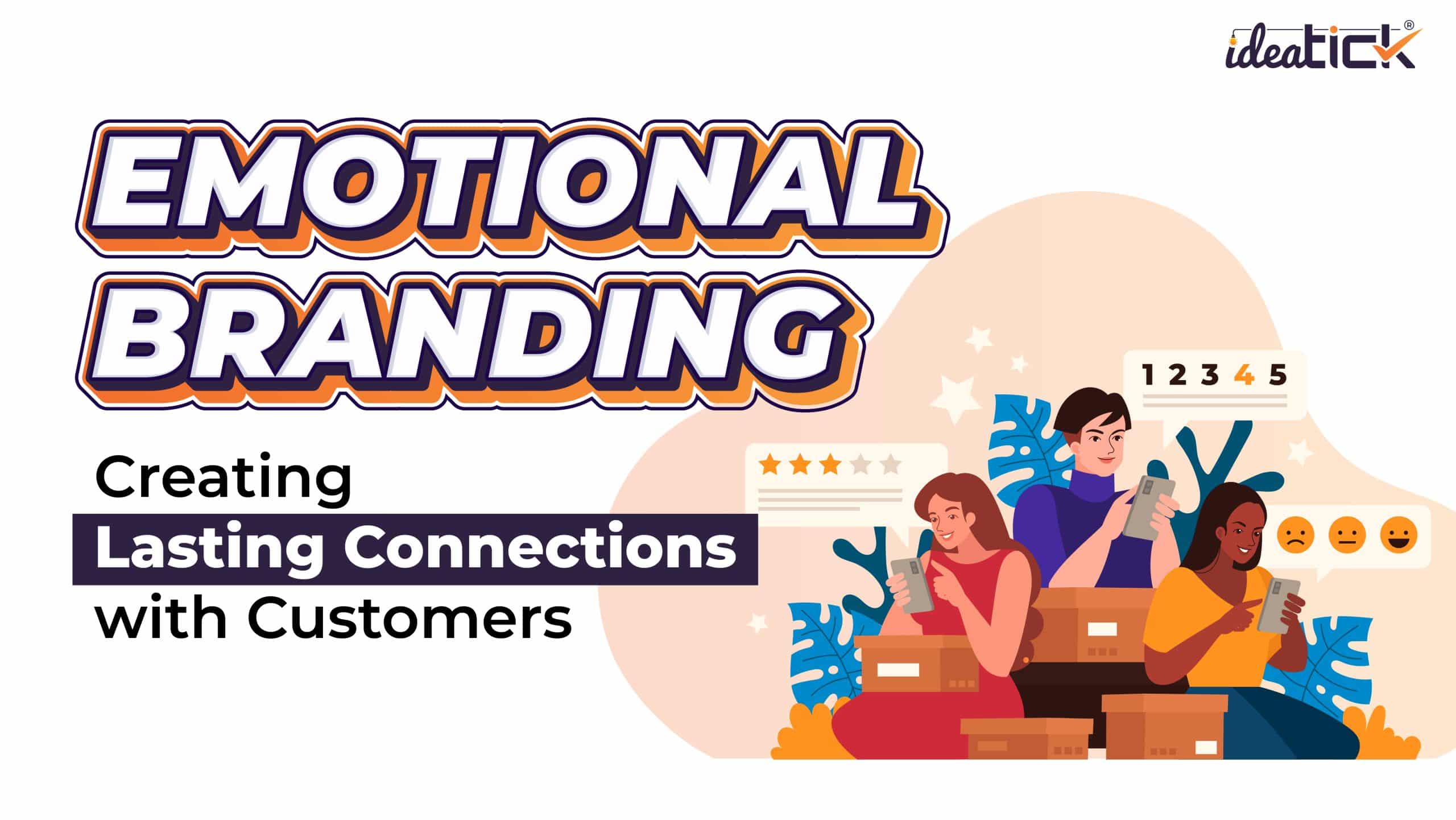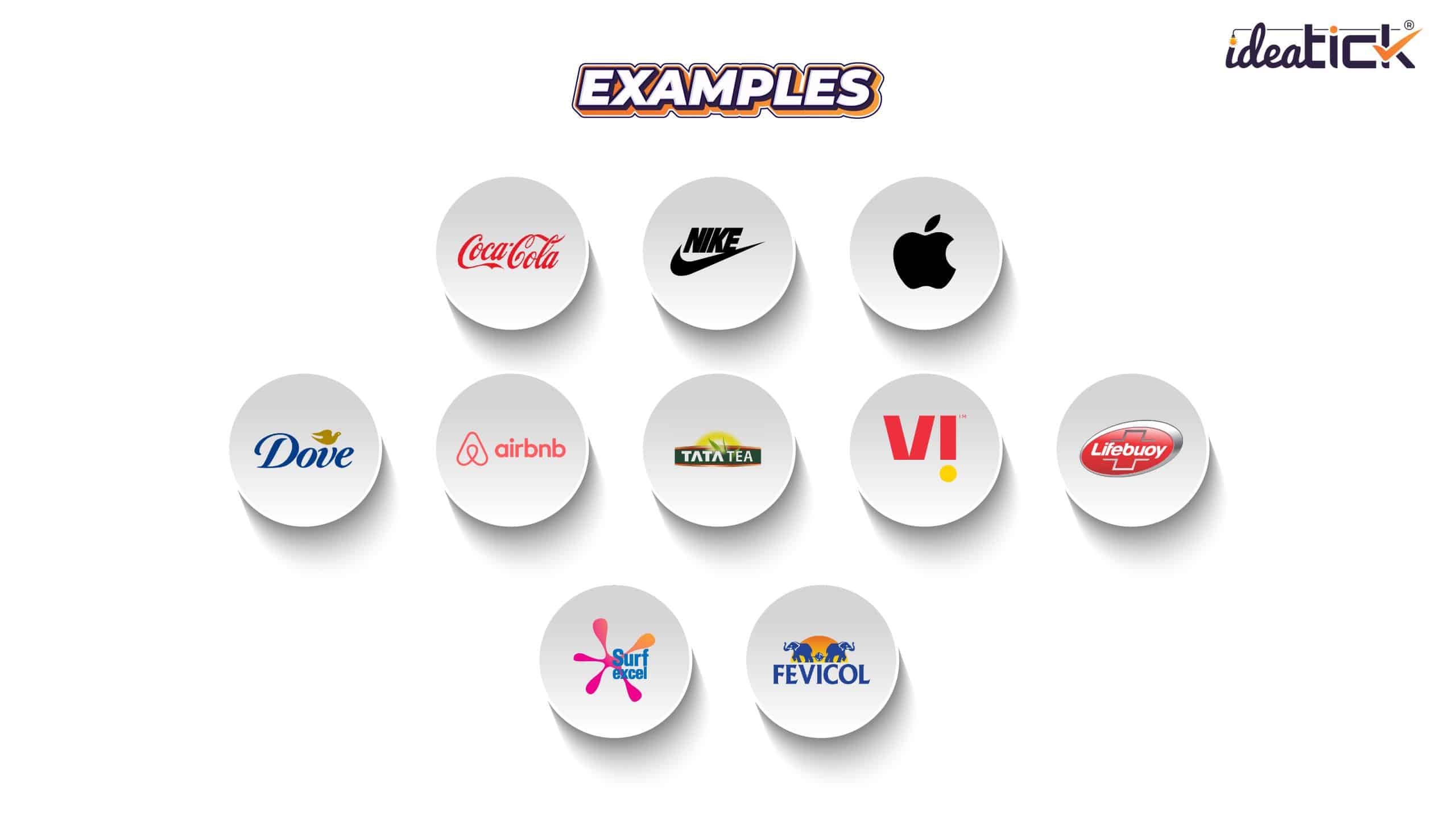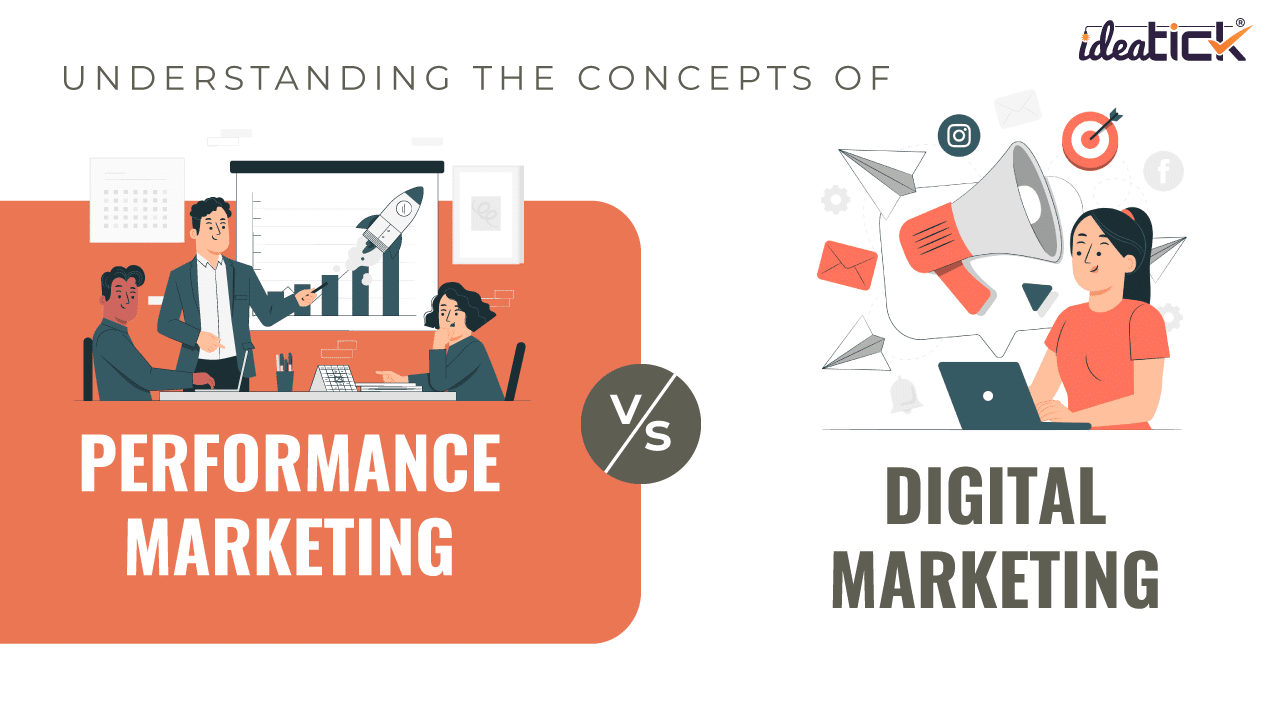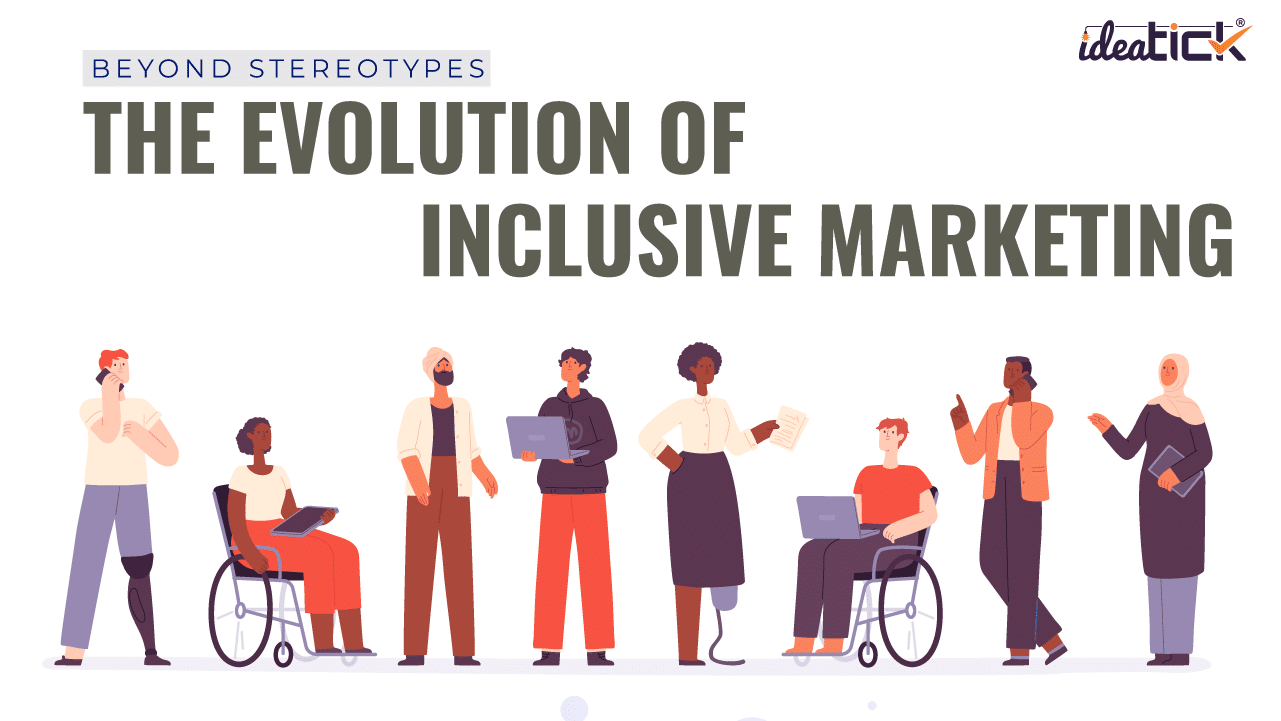Emotional Branding: Creating Lasting Connections with Customers

Imagine stepping into a whimsical wonderland where emotions take center stage, and branding becomes an enchanting dance.
Emotional branding is a secret language that transcends the realm of mere logos and catchy slogans. It is the art of crafting an unforgettable experience that tugs at the customers’ heartstrings, leaving an indelible mark on their souls. Just like a masterful conductor, emotional branding orchestrates a symphony of feelings, creating an immersive story that resonates deeply.
Imagine a brand that wraps you in a warm embrace, like a cozy blanket on a rainy day. It understands your fears, celebrates your victories, and becomes your trusted companion on life’s journey. It’s more than just a product or service—it’s a companion that shares your joys and sorrows, creating a bond that transcends the ordinary. It beckons you to follow your heart, chase your dreams, and embrace the beauty of life. It empowers you, making you feel like the hero of your own story.
So, the next time you encounter a brand that touches your soul, remember it’s not just a clever marketing ploy. It’s an invitation to embark on a magical journey where emotions reign supreme.
What is Emotional Branding?
Emotional branding is building an emotional connection between a brand and its customers, going beyond product features to evoke feelings, experiences, and values that resonate with their target audience.
How Emotional Marketing Works?
Emotional marketing works by appealing to the emotions of consumers to create a strong and lasting connection between a brand and its target audience.
Here’s a simplified explanation of how it operates:
- Understanding the Audience: Emotional marketing begins with a deep understanding of the target audience’s desires, needs, values, and aspirations, which helps brands tailor their marketing strategies to resonate with their customers emotionally.
- Identifying Emotions: Brands determine the key emotions they want to evoke in their audience, such as happiness, nostalgia, excitement, trust, or inspiration.
- Emotional Storytelling: Brands create narratives using story-telling techniques to engage customers emotionally, often through advertising, social media content, or other forms of communication.
- Emotional Triggers: Emotional marketing utilizes elements like colors, visuals, music, and language to trigger specific consumer emotions. These triggers help create a deeper emotional connection to the brand.
- Authenticity and Consistency: Emotional marketing relies on authenticity. Brands must align their emotional messaging with their core values and consistently deliver on their promises to build trust and credibility.
- Building Connections: By consistently delivering emotionally impactful experiences, brands seek to become trusted companions and fulfill customers’ emotional needs.
- Customer Engagement: Emotional marketing encourages active engagement with customers, allowing them to share their experiences and become part of the brand’s community.
- Evaluation and Refinement: Emotional marketing strategies are continuously evaluated and refined based on customer feedback and data analysis. Brands monitor sentiment and make adjustments to optimize their emotional marketing efforts.
Through emotional marketing, brands aim to create a strong emotional association with their audience, leading to increased brand loyalty, customer engagement, and ultimately, business success.
What Are the Benefits of Emotional Branding?
- Stronger Brand Connection: Emotional marketing allows businesses to forge a deep and lasting connection with their target audience. By appealing to customers’ emotions, brands can create a sense of loyalty, trust, and affinity, leading to long-term relationships and repeat business.
- Enhanced Customer Engagement: Emotional marketing strategies grab attention and stimulate engagement. When customers feel an emotional connection to a brand, they are more likely to interact with its content, share it with others, and actively participate in brand-related activities.
- Differentiation and Competitive Advantage: In a crowded marketplace, emotional marketing helps brands stand out. By tapping into emotions, brands can create a unique identity and personality that sets them apart, making it harder for competitors to replicate or imitate.
- Increased Brand Recall: Emotionally charged marketing messages are more memorable. When brands evoke emotions in their customers, it leaves a lasting impression, leading to improved brand recall and recognition. It can be particularly beneficial when customers are making purchasing decisions.
- Higher Customer Satisfaction: Emotional marketing aims to understand and cater to customers’ needs, desires, and aspirations. By aligning with their emotions, brands can create a more fulfilling and satisfying customer experience, leading to higher customer satisfaction levels and loyalty.
- Improved Customer Advocacy: Consumers who feel a strong emotional connection to a brand are more likely to become brand advocates. They will promote and recommend the brand to others, becoming valuable ambassadors and contributing to positive word-of-mouth marketing.
- Increased Sales and Revenue: Emotional marketing can have a direct impact on sales and revenue. When customers feel emotionally connected to a brand, they are more inclined to make purchases, often driven by their desire to fulfill emotional needs and aspirations associated with the brand.
Emotional Branding Examples
Coca-Cola
Coca-Cola has been successful in using emotional branding for decades. Their advertising campaigns often evoke feelings of happiness, togetherness, and nostalgia. The famous “Holidays are Coming” commercial, featuring the Coca-Cola truck and festive music, creates a sense of joy and anticipation during the holiday season.
Nike
Nike’s “Just Do It” campaign is a prime example of emotional branding. They inspire customers by tapping into the emotions of determination, empowerment, and overcoming obstacles. Nike’s advertisements often feature stories of athletes pushing their limits, encouraging viewers to embrace their inner strength and pursue their dreams.
Apple
Apple has built a strong emotional connection with its customers through its branding. Their sleek and minimalist design, combined with emotional messaging focused on creativity, innovation, and personal expression, has resonated with audiences. Apple’s commercials often highlight the emotional impact of their products on people’s lives.
Dove
Dove’s “Real Beauty” campaign challenges traditional beauty standards and promotes self-acceptance. By celebrating diversity and featuring real women of different shapes, sizes, and ages, Dove has created an emotional connection with consumers who appreciate the brand’s inclusive and empowering messaging.
Airbnb
Airbnb taps into the emotions of belonging, adventure, and connection. Their marketing campaigns often focus on the idea of “belonging anywhere” and the transformative power of travel. By showcasing unique accommodations and encouraging authentic experiences, Airbnb creates an emotional appeal for travelers seeking memorable and meaningful journeys.
Tata Tea
Tata Tea’s “Jaago Re” campaign focused on social issues and encouraged individuals to take action. It evoked emotions of awareness, empowerment, and social responsibility, aiming to create a positive impact on society.
Vodafone
Vodafone’s “ZooZoos” campaign utilized cute animated characters to convey various emotions and messages. These lovable characters became a hit and generated a strong emotional connection with the audience, enhancing brand recall and likability.
Lifebuoy
Lifebuoy’s “Help a Child Reach 5” campaign aimed to raise awareness about the importance of handwashing to prevent diseases. By highlighting the emotional stories of mothers and children, it created a sense of empathy and care, fostering a connection with the brand.
Surf Excel
Surf Excel’s “Daag Acche Hain” campaign emphasized the positive value of stains as a symbol of love and care. It showcased emotional stories of sacrifice and kindness, resonating with the Indian audience’s cultural values of familial bonds and compassion.
Fevicol
Fevicol’s long-standing “Fevicol ka Jod” campaign showcased humorous situations that required a strong adhesive bond. It created a humorous and emotional connection with the audience, associating the brand with reliability and durability.
In conclusion, emotional branding is a powerful strategy that allows brands to forge deep connections with their audience by tapping into their emotions, values, and aspirations. By evoking specific emotions, telling compelling stories, and fostering authenticity, brands can create a strong bond that goes beyond product features and drives customer loyalty and advocacy.
When it comes to implementing emotional branding strategies, partnering with a reputable digital marketing agency like Ideatick can greatly benefit your brand. Ideatick, a leading digital marketing agency, specializes in helping brands leverage emotional branding to connect with their target audience. Here’s how Ideatick can assist your brand:
- Strategic Insights: Our process starts by gaining a deep understanding of your brand, target audience, and market dynamics. We conduct comprehensive research to identify the emotions and values that resonate with your audience, ensuring a solid emotional foundation for your brand.
- Emotional Storytelling: We excel at crafting compelling narratives that evoke the desired emotions and align with your brand’s identity. We can create engaging content, whether it’s through captivating videos, heartfelt stories, or visually stunning designs, to connect with your audience on an emotional level.
- Creative Execution: Our team of talented designers, writers, and marketers work collaboratively to deliver visually appealing and emotionally resonant campaigns across various channels, including social media, websites, and advertisements.
- Emotional Trigger Implementation: We help you identify and implement emotional triggers of colors, visuals, music, and language to further enhance the emotional impact of your brand. By strategically utilizing these triggers, we ensure your messaging elicits the intended emotional responses from your audience.
- Authenticity and Consistency: Our team emphasizes authenticity in all their strategies. We work closely with your brand to ensure that the emotional messaging aligns with your core values and resonates with your audience’s expectations. By maintaining consistency, we help build trust and credibility, fostering a genuine connection with your audience.
- Measurement and Optimization: We continuously monitor and measure the effectiveness of your emotional branding campaigns. Our team analyzes data, gathers feedback, and refines the strategies to optimize performance and ensure your brand’s emotional impact continues to resonate with your target audience.
With Ideatick’s expertise in emotional branding, your brand can forge strong emotional connections, enhance brand loyalty, and differentiate itself in the market.
Related: Understanding the Concepts of Performance Marketing vs. Digital Marketing





